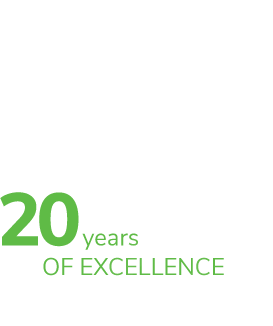Talent management and workforce planning are effective, valuable approaches to building a successful team and maintaining them long-term. While both have similar goals, the methods they take to achieve those goals are different. In either situation, the goal for any company is the same – hiring and retaining the best people for the job even as the company’s needs, industry, or economy changes.
What Is Talent Management?
Talent management is a human resource process. Its goal is to keep employees engaged as well as motivated. In doing so, those workers perform at an optimal level. Talent management typically focuses on the proper onboarding of new workers, ensuring that the person stepping onto the job feels welcomed and supported as they take on new tasks.
Talent management also focuses on making sure current employees are supported. This includes giving them the tools to do their job and the proper communication to help them feel valued. A strong focus on talent management enables companies to keep those employees long-term, helping them develop and grow within the organization to enjoy a long, successful career.
What is Workforce Planning?
Workforce planning is a strategic view of what’s to come and how employees will fit into the larger picture. It focuses on the goal of building a strong workforce that fills needs now as well as in the long term. In this method, the focus is on the current workforce and industry trends. It also applies analytics to the situation to determine how much of a demand your company may have in the future for workers.
Workforce planning concentrates on hiring new workers and has a strong focus on maintaining current employees. In this method, it’s important to keep current employees building new skills. Those skills are specific to the goals and needs of the business over time and may include helping employees keep up with the competition.
In workforce planning, there is a focus on the organization’s current and future workforce needs based on the company’s current state and its goals. Looking ahead for new hiring needs based on an analysis of company data and objectives, often led by business leaders and HR, helps organizations stay on top of what’s to come. Recognizing that need, it is then possible to work with existing employees to help them get the right type of training and support they need to meet those future goals.
How Do These Two Systems Work Together and Yet Differ?
Organizations do not have to choose just one. In many cases, using both methods is beneficial. The key is to understand how talent management and workforce planning work together to benefit the company.
Workforce planning is more of a statistical tool that aims to create the perfect team to achieve current and long-term goals. The decisions in this system are based on the trends in the industry and future task needs. This method focuses less on individual people and more on creating a group that has the ability to achieve specific goals.
Talent management is more focused on creating and maintaining employees. Its focus on employee retention is fostered in building morale in the company. By doing this, it aims to keep employees engaged in the organization and motivated to do their best job. They will continue to build on skills, and that helps to benefit the company as well.
By linking both methods to each other, it’s possible to create an incredible workforce that’s sustainable long term and supports both individual needs and those of the organization.
A specialized recruitment agency is well-positioned to assist a company with its workforce planning strategy. Because it has comprehensive expertise in its field, the agency is able to help a company identify the qualifications required for a given position and assist in the recruitment and selection of the best candidate for the job.
How Can Workforce Planning Benefit the Organization?
There are multiple ways workforce planning may benefit an organization:
- Anticipating change: Workforce planning helps to anticipate what’s to come in the industry, and talent needs. This allows organizations to better plan for change.
- Reducing hiring costs: This method allows organizations to better understand productivity levels needed to grow the company and make the most out of workers. This improves operations and helps to reduce costs related to the recruitment of new employees.
- Improves the recruitment process: The analytical component of workforce planning helps organizations to know exactly which traits and skills they need for workers, allowing for a potentially better hire. This may also help boost retention rates and interview-to-hire rates.
- Identifies gaps early on: This type of focus enables organizations to spot holes in their talent chain early on, allowing companies to make changes sooner to address them. It may also contribute to helping the company stay ahead of the competition.
- Supports business strategy: Workforce planning helps organizations to align their hiring goals with their business strategy. This may include areas such as career development programs, employee assistance, and wellness programs.
Key Elements of Workforce Planning
To be successful, workforce planning requires a careful approach and a well-thought-out plan. To put a plan like this in place, there’s a need to consider each of these areas:
- Determine long-term goals for the organization. Where is it heading? What do industry trends focus on?
- Analyze the current workforce to understand what skills and attributes are already present.
- Determine what future skills are necessary within the industry or to meet the company’s goals.
- Consider various scenarios. Many plans have multiple scenarios at play to ensure they can meet any situation, even in fast-changing situations.
- Fill future skill gaps. This may include hiring for those needs and developing workers to meet goals.
- Monitoring conditions and goals, then adapting to changes as they come. Build workforce planning alongside the company’s goals and culture.
The advantages of workforce planning include developing a long-term recruitment strategy, reducing costs for hiring, and improving the company’s ability to weather change over time. Most organizations benefit from a combined approach to talent management and workforce planning to address these needs over time. Both methods can help with hiring now, but they are both well-suited for planning for tomorrow’s needs.
As recruitment and talent acquisition specialists in accounting and finance, Exceleris can help you throughout your hiring process, workforce planning, and talent management needs. To find out what we can do to support your business’s success, contact us now.



